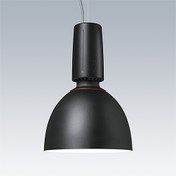Glacier II / GLAC2 L LED3 5000-830 BC E3 BK AL BK
96632194
▼ Datenblatt
Eine moderne und effiziente LED-Pendelleuchte. Elektronisches, Drahtlose Verbindung via App mit Bluetooth® 4.x - basicDIM Wireless mit 3 Stunden Notlichtfunktion und manueller Testung. Gehäuse: Aluminium Druckguss, gehalten in satiniert schwarz. Reflektor: Aluminiumschwarz, einfacher Anschluss an das Gehäuse mit Bajonettverschluss. Schutzklasse I, IP20. Abhängung über werkzeuglos verstellbare Seilabhängung, 2,5 m lang mit Schnellbefestigung (im Lieferumfang enthalten). Vorverdrahtet mit dekorativ ummanteltem, flammsicherem 0,75-mm²-Silikonkabel, 6 x. Inklusive LED-Modul mit 3000K
Funk Definition: basicDIM Wireless - Bluetooth® 4.x, Funk Frequenz: 2,4...2,483 GHz, Funk Sendeleistung: +4dBm.
Abmessungen: Ø340/140 x 485 mm
Leuchten Leistung: 45 W
Gewicht: 5,1 kg
- LED
- BEG
- CE
- EN 55015
- IP20
- Schutzklasse 1
- Ta=25

